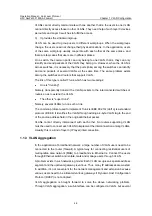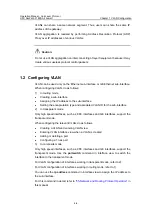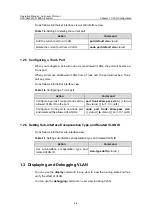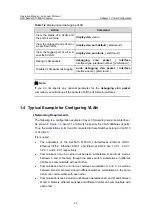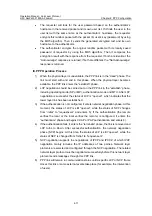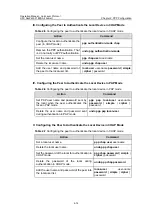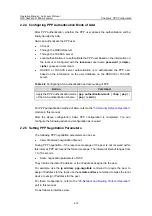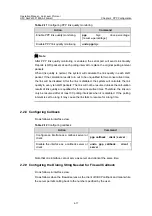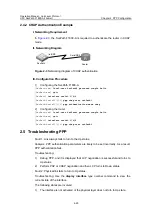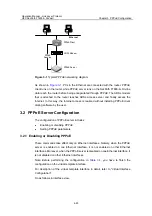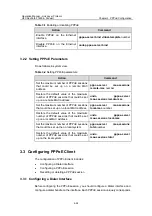
Operation Manual - Link Layer Protocol
H3C SecPath F1800-A Firewall
Chapter 2 PPP Configuration
4-10
Chapter 2 PPP Configuration
2.1 PPP Overview
I. PPP
The Point-to-Point Protocol (PPP) is one of link layer protocols that bearing network
layer packets over the point-to-point link.
It has been widely used since it can provide user authentication, support synchronous
and asynchronous communication and can be expanded easily.
PPP defines a whole set of protocols, including:
z
Link Control Protocol (LCP)
z
Network Control Protocol (NCP)
z
Authentication protocols (including Password Authentication Protocol (PAP) and
Challenge-Handshake Authentication Protocol (CHAP))
Among them:
z
LCP is used to negotiate some parameters on the link, and establish and monitor
the data link.
z
NCP is used to negotiate parameters of network layer protocols.
II. PPP Authentication
1) PAP
authentication
PAP is a 2-way handshake authentication protocol and it sends the user name and
password in plain text.
The process of PAP authentication is as follows:
z
The requester under authentication sends its user name and password to the
authenticator.
z
The authenticator checks if the user name exists and the password are correct
based on the local user list. If the user name exists and the password is correct,
the authenticator returns the “Acknowledge” response; if the user name does not
exist and the password is incorrect, the authenticator returns the “Not
Acknowledge” response.
2) CHAP
authentication
CHAP is a 3-way handshake authentication protocol and the password is sent in
encrypted text (key).
The process of CHAP authentication is as follows:
z
The authenticator sends some randomly generated messages to the requester,
and at the same time it sends its own hostname to the requester.





